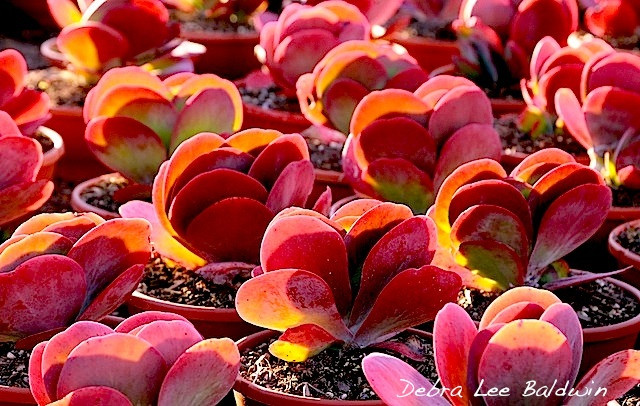 You’re probably aware of flapjack plant (Kalanchoe luciae), a succulent that’s popular because of the color of its leaves. (Shown above at Waterwise Botanicals nursery, perfectly timed for Valentine’s Day.)
You’re probably aware of flapjack plant (Kalanchoe luciae), a succulent that’s popular because of the color of its leaves. (Shown above at Waterwise Botanicals nursery, perfectly timed for Valentine’s Day.)
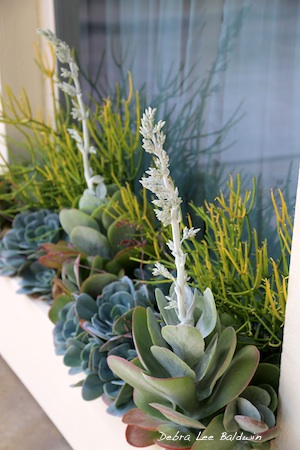
Like other succulents with overlapping leaves along a single stem, when Kalanchoe luciae blooms, the entire plant elongates. This is how those in my window box looked in early March of last year.
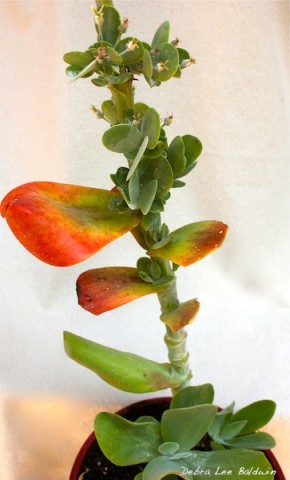
If your goal is to have a lot of new little plants, one option is to let the mother plant bloom. Providing it survives the effort (they usually do, but not always), you’ve hit the jackpot. Harvest each cluster with several inches of stem attached to anchor it, and start it as a cutting. Roots will grow from leaf axils (where leaves are attached to the stem).
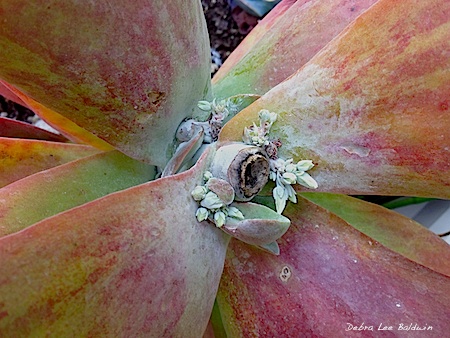
I didn’t want awkwardly tall plants in my window box, so when the flapjacks started to elongate in March, I snipped off the bloom spikes. The mother plants seemed determined to flower regardless, and buds grew from leaf axils beneath the cut. I was just as determined they weren’t going to flower, so I pinched out the buds.
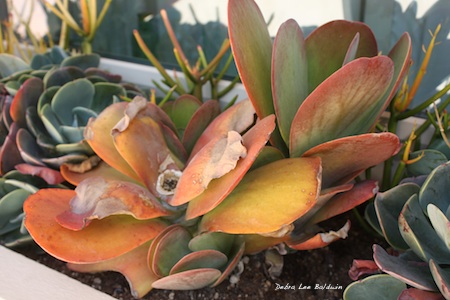
Within a month, the plants’ topmost leaves turned beige and crisp along the edges. I’m not sure why this happened, but I trimmed them to keep the plants tidy.

By June, new little leaves concealed the truncated stems, indicating that the plants had been gearing up to produce offsets. When they couldn’t do it along a bloom spike, they did so closer to the core.
 Here’s how one of the plants looked in August.
Here’s how one of the plants looked in August.

And again in October. Other plants in the window box are blue echeverias and Euphorbia tirucalli ‘Sticks on Fire’. The composition looks fine, but would be even better if those flapjacks would turn as red as they were at the nursery! (Hm. Topic for a future post? “How to Keep your Flapjacks Red.” Advice welcome!)
